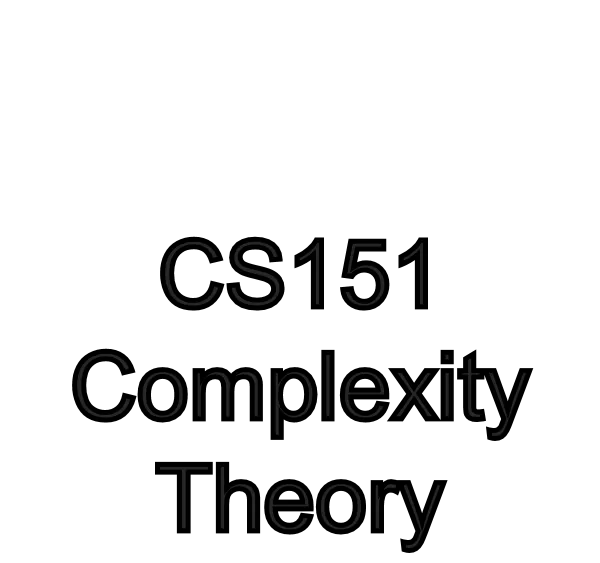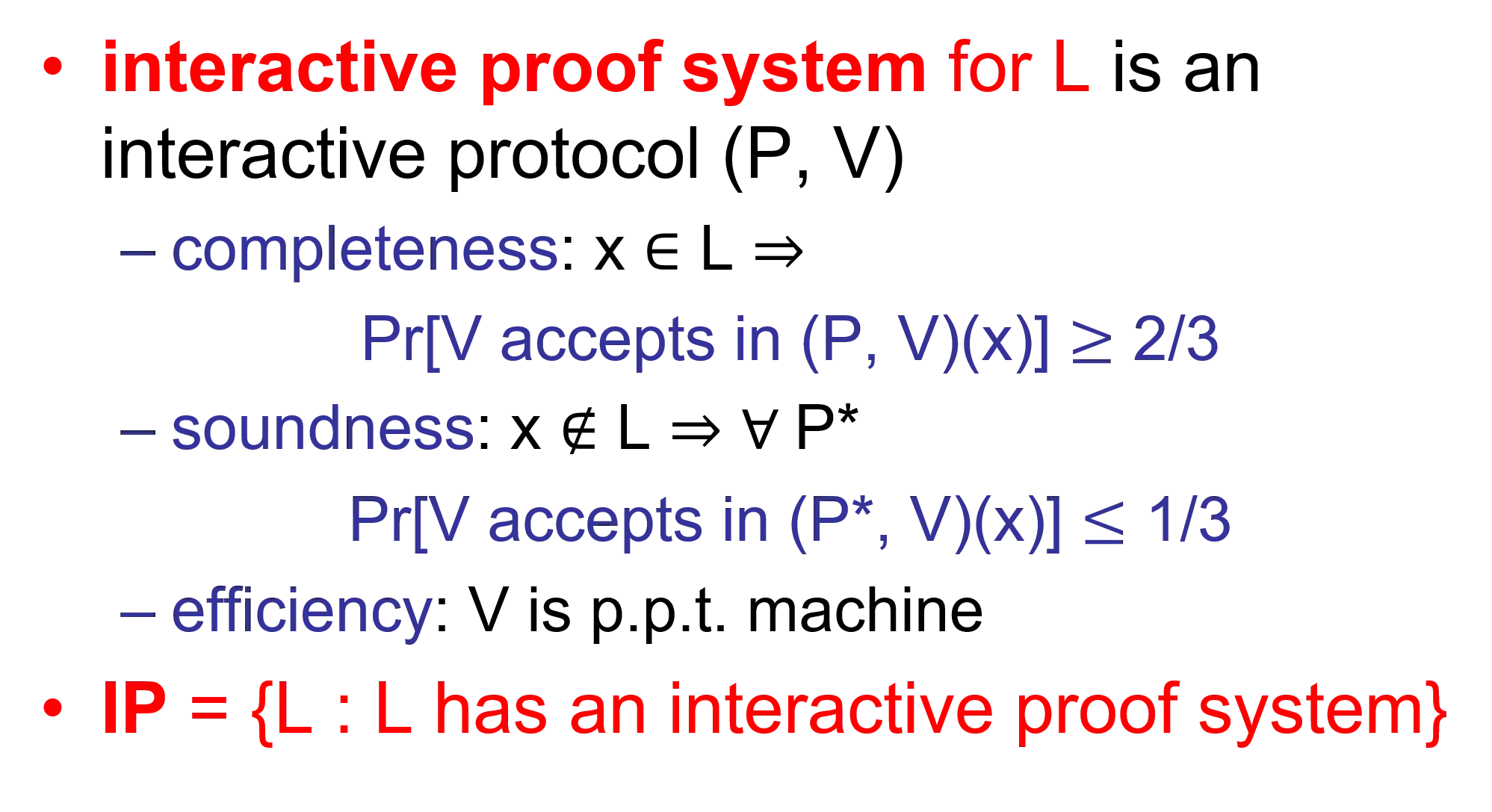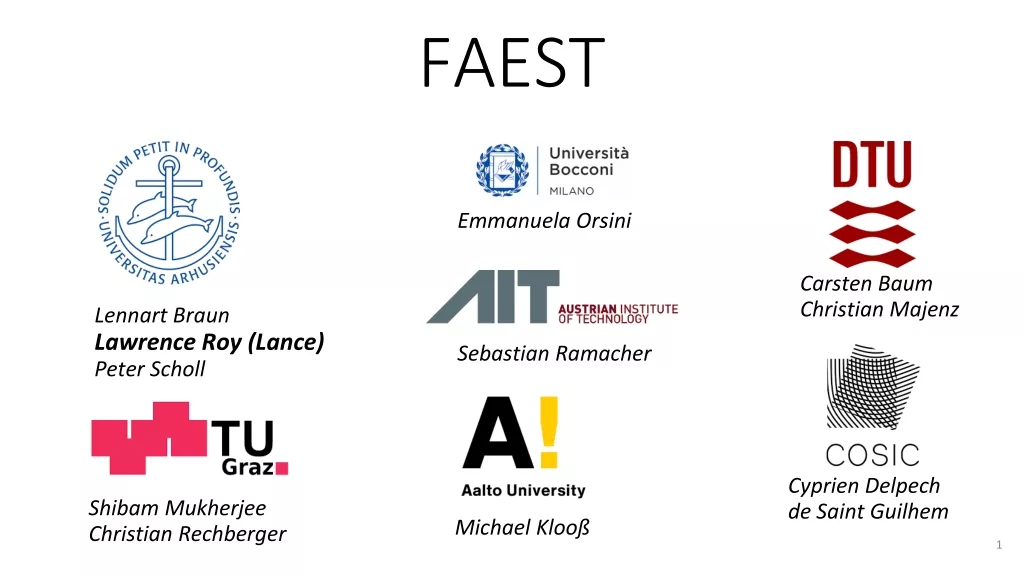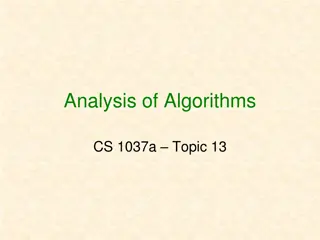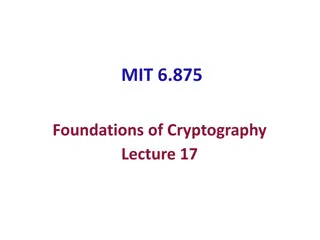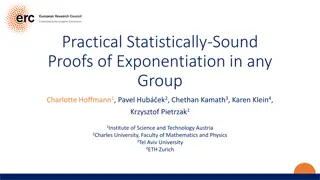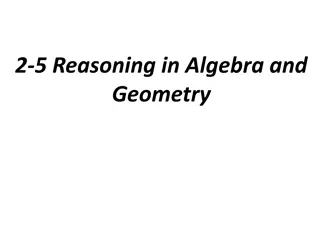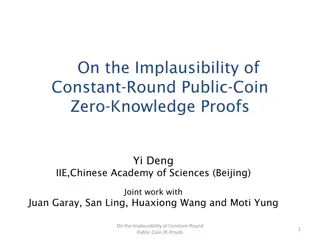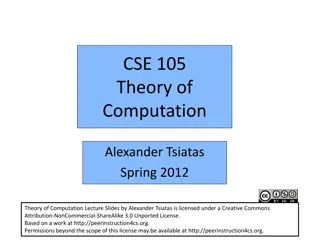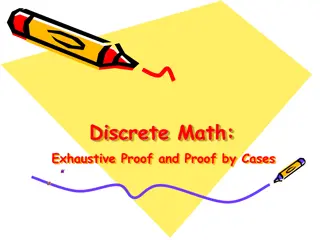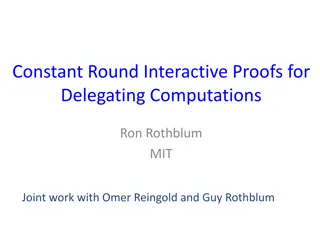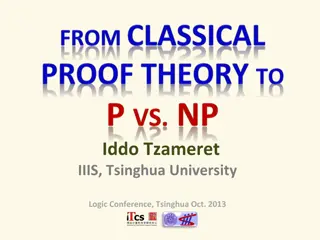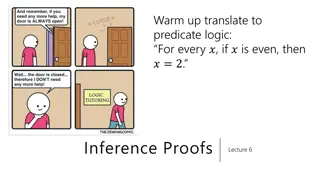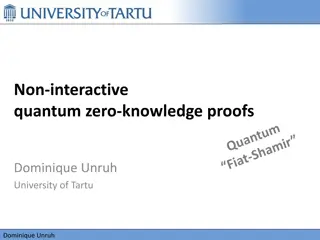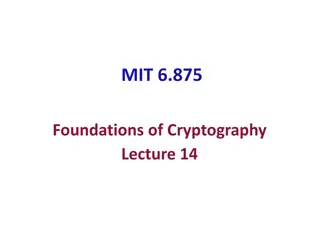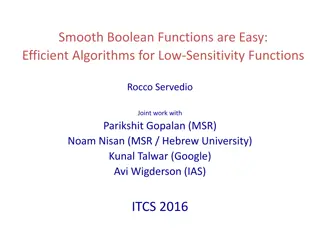Interactive Proofs in Complexity Theory
Delve into the realm of interactive proofs in complexity theory, exploring concepts such as completeness, soundness, and efficiency. Discover how interactive proof systems can be utilized in scenarios like graph isomorphism and their implications on the complexity classes NP and coNP. Uncover the intriguing notion that interactive proofs may offer more computational power than traditional complexity classes like NP. The power and potential of interactive proofs are laid out in a captivating lecture on complexity theory.
Download Presentation

Please find below an Image/Link to download the presentation.
The content on the website is provided AS IS for your information and personal use only. It may not be sold, licensed, or shared on other websites without obtaining consent from the author.If you encounter any issues during the download, it is possible that the publisher has removed the file from their server.
You are allowed to download the files provided on this website for personal or commercial use, subject to the condition that they are used lawfully. All files are the property of their respective owners.
The content on the website is provided AS IS for your information and personal use only. It may not be sold, licensed, or shared on other websites without obtaining consent from the author.
E N D
Presentation Transcript
CS151 Complexity Theory Lecture 14 May 18, 2023
Interactive Proofs interactive proof system for L is an interactive protocol (P, V) completeness: x L Pr[V accepts in (P, V)(x)] 2/3 soundness: x L P* Pr[V accepts in (P*, V)(x)] 1/3 efficiency: V is p.p.t. machine IP = {L : L has an interactive proof system} May 18, 2023 CS151 Lecture 14
Graph Isomorphism graphs G0 = (V, E0) and G1 = (V, E1) are isomorphic (G0 G1) if exists a permutation :V V for which (x, y) E0 ( (x), (y)) E1 1 1 1 4 2 3 4 3 2 3 4 2 May 18, 2023 CS151 Lecture 14
Graph Isomorphism GI = {(G0, G1) : G0 G1 } in NP not known to be in P, or NP-complete GNI = complement of GI not known to be in NP Theorem (GMW): GNI IP indication IP may be more powerful than NP May 18, 2023 CS151 Lecture 14
GNI in IP interactive proof system for GNI: input: (G0, G1) Prover Verifier flip coin c {0,1}; pick random accept iff r = c H = (Gc) if H G0 r = 0, else r = 1 r May 18, 2023 CS151 Lecture 14
GNI in IP completeness: if G0 not isomorphic to G1 then H is isomorphic to exactly one of (G0, G1) prover will choose correct r soundness: if G0 G1 then prover sees same distribution on H for c = 0, c = 1 no information on c any prover P* can succeed with probability at most 1/2 May 18, 2023 CS151 Lecture 14
The power of IP We showed GNI IP GNI IP suggests IP more powerful than NP, since we don t know how to show GNI in NP GNI in coNP Theorem (LFKN): coNP IP May 18, 2023 CS151 Lecture 14
The power of IP Proof idea: prover: I claim has k satisfying assignments true iff (0, x2, , xn) has k0 satisfying assignments (1, x2, , xn) has k1 satisfying assignments k = k0 + k1 prover sends k0, k1 verifier sends random c {0,1} prover recursively proves = (c, x2, , xn) has kc satisfying assignments at end, verifier can check for itself. input: (x1, x2, , xn) May 18, 2023 CS151 Lecture 14
The power of IP Analysis of proof idea: Completeness: (x1, x2, , xn) has k satisfying assignments accept with prob. 1 Soundness: (x1, x2, , xn) does not have k satisfying assigns. accept prob. 1 2-n Why? It is possible that k is only off by one; verifier only catches prover if coin flips c are successive bits of this assignment May 18, 2023 CS151 Lecture 14
The power of IP Solution to problem (ideas): replace {0,1}n with (Fq)n verifier substitutes random field element at each step vast majority of field elements catch cheating prover (rather than just 1) Theorem: L = { ( , k): CNF has exactly k satisfying assignments} is in IP May 18, 2023 CS151 Lecture 14
The power of IP First step: arithmetization transform (x1, xn) into polynomial p (x1, x2, xn) of degree d over a field Fq; q prime > 2n recursively: xi xi (p )(p ) 1 - (1 - p )(1 - p ) for all x {0,1}n we have p (x) = (x) degree d | | can compute p (x) in poly time from and x (1 - p ) May 18, 2023 CS151 Lecture 14
The power of IP Prover wishes to prove: k = x1 = 0, 1 x2 = 0,1 xn = 0, 1p (x1, x2, , xn) Define: kz = x2 = 0,1 xn = 0, 1p (z, x2, , xn) prover sends: kz for all z Fq verifier: checks that k0 + k1 = k sends random z Fq continue with proof that kz = x2 = 0,1 xn = 0, 1p (z, x2, , xn) at end: verifier checks for itself May 18, 2023 CS151 Lecture 14
The power of IP Prover wishes to prove: k = x1 = 0, 1 x2 = 0,1 xn = 0, 1p (x1, x2, , xn) Define: kz = x2 = 0,1 xn = 0, 1p (z, x2, , xn) a problem: can t send kz for all z Fq solution: send the polynomial ! recall degree d | | May 18, 2023 CS151 Lecture 14
The actual protocol input: ( , k) Prover p1(x) = x2, ,xn {0,1} p (x, x2, , xn) p2(x) = x3, ,xn {0,1} p (z1, x, x3, , xn) p2(x) Verifier p1(x) p1(0)+p1(1)=k? pick random z1 in Fq z1 p2(0)+p2(1)=p1(z1)? pick random z2 in Fq z2 p3(x) = x4, ,xn {0,1} p (z1, z2, x, x4 , xn) p3(x) p3(0)+p3(1)=p2(z2)? pick random z3 in Fq pn(0)+pn(1)=pn-1(zn-1)? pick random zn in Fq . . pn(x) pn(zn) = p (z1, z2, , zn)? May 18, 2023 CS151 Lecture 14
Analysis of protocol Completeness: if ( , k) L then honest prover on previous slide will always cause verifier to accept May 18, 2023 CS151 Lecture 14
Analysis of protocol Soundness: let pi(x) be the correct polynomials let pi*(x) be the polynomials sent by (cheating) prover ( , k) L p1(0) + p1(1) k either p1*(0) + p1*(1) k or p1* p1 Prz1[p1*(z1) = p1(z1)] d/q | |/2n assume (pi+1(0)+pi+1(1)= )pi(zi) pi*(zi) either pi+1*(0) + pi+1*(1) pi*(zi) or pi+1* pi+1 Przi+1[pi+1*(zi+1) = pi+1(zi+1)] | |/2n (and V rejects) (and V rejects) May 18, 2023 CS151 Lecture 14
Analysis of protocol Soundness (continued): if verifier does not reject, there must be some i for which: pi* pi and yet pi*(zi) = pi(zi) for each i, probability is | |/2n union bound: probability that there exists an i for which the bad event occurs is n| |/2n poly(n)/2n << 1/3 May 18, 2023 CS151 Lecture 14
Analysis of protocol Conclude: L = { ( , k): CNF has exactly k satisfying assignments} is in IP L is coNP-hard, so coNP IP Question remains: NP, coNP IP. Potentially larger. How much larger? May 18, 2023 CS151 Lecture 14
IP = PSPACE Theorem: (Shamir) IP = PSPACE Note: IP PSPACE enumerate all possible interactions, explicitly calculate acceptance probability interaction extremely powerful ! An implication: you can interact with master player of Generalized Geography and determine if she can win from the current configuration even if you do not have the power to compute optimal moves! May 18, 2023 CS151 Lecture 14
IP = PSPACE need to prove PSPACE IP use same type of protocol as for coNP some modifications needed May 18, 2023 CS151 Lecture 14
IP = PSPACE protocol for QSAT arithmetization step produces arithmetic expression p : ( xi) xi = 0, 1 p ( xi) xi = 0, 1 p start with QSAT formula in special form ( simple ) no occurrence of xi separated by more than one from point of quantification May 18, 2023 CS151 Lecture 14
IP = PSPACE quantified Boolean expression is true if and only if p > 0 Problem: s may cause p > 22| | Solution: evaluate mod 2n q 23n prover sends good q in first round good q is one for which p mod q> 0 Claim: good q exists # primes in range is at least 2n May 18, 2023 CS151 Lecture 14
The QSAT protocol input: Prover Verifier k, q, p1(x) p1(0)+p1(1) = k? or p1(0)p1(1) = k? pick random z1 in Fq p2(0)+p2(1)=p1(z1)? or p2(0)p2(1) = p1(z1)? pick random z2 in Fq p1(x): remove outer or from p z1 p2(x): remove outer or from p [x1 z1] p2(x) z2 p3(x): remove outer or from p [x1 z1, x2 z2] p3(x) . . pn(0)+pn(1)=pn-1(zn-1)? or pn(0)pn(1) = pn-1(zn-1)? pick random zn in Fq pn(zn) = p [x1 z1, , xn zn] CS151 Lecture 14 pn(x) May 18, 2023
Analysis of the QSAT protocol Completeness: if QSAT then honest prover on previous slide will always cause verifier to accept May 18, 2023 CS151 Lecture 14
Analysis of the QSAT protocol Soundness: let pi(x) be the correct polynomials let pi*(x) be the polynomials sent by (cheating) prover QSAT 0 = p1(0) +/x p1(1) k either p1*(0) +/x p1*(1) k (and V rejects) or p1* p1 Prz1[p1*(z1) = p1(z1)] 2| |/2n assume (pi+1(0) +/x pi+1(1)=)pi(zi) pi*(zi) either pi+1*(0) +/x pi+1*(1) pi*(zi) (and V rejects) or pi+1* pi+1 Przi+1[pi+1*(zi+1) = pi+1(zi+1)] 2| |/2n is simple May 18, 2023 CS151 Lecture 14
Analysis of protocol Soundness (continued): if verifier does not reject, there must be some i for which: pi* pi and yet pi*(zi) = pi(zi) for each i, probability is 2| |/2n union bound: probability that there exists an i for which the bad event occurs is 2n| |/2n poly(n)/2n << 1/3 Conclude: QSAT is in IP May 18, 2023 CS151 Lecture 14
Example Papadimitriou pp. 475-480 = x y(x y) z((x z) (y z)) w(z (y w)) p = x=0,1 y=0,1[(x + y) * z=0,1[(xz + y(1-z)) + w=0,1(z + y(1-w))]] (p = 96 but V doesn t know that yet !) May 18, 2023 CS151 Lecture 14
Example p = x=0,1 y=0,1[(x + y) * z=0,1[(xz + y(1-z)) + w=0,1(z + y(1-w))]] Round 1: (prover claims p > 0) prover sends q = 13; claims p = 96 mod 13 = 5; sends k = 5 prover removes outermost ; sends p1(x) = 2x2 + 8x + 6 verifier checks: p1(0)p1(1) = (6)(16) = 96 5 (mod 13) verifier picks randomly: z1 = 9 May 18, 2023 CS151 Lecture 14
Example = x y(x y) z((x z) (y z)) w(z (y w)) p = x=0,1 y=0,1[(x + y) * z=0,1[(xz + y(1-z)) + w=0,1(z + y(1-w))]] p [x 9] = y=0,1[(9 + y) * z=0,1[(9z + y(1-z)) + w=0,1(z + y(1-w))]] May 18, 2023 CS151 Lecture 14
Example p1(9)= y=0,1[(9 + y) * z=0,1[(9z + y(1-z)) + w=0,1(z + y(1-w))]] Round 2: (prover claims this = 6) prover removes outermost ; sends p2(y) = 2y3 + y2 + 3y verifier checks: p2(0) + p2(1) = 0 + 6 = 6 6 (mod 13) verifier picks randomly: z2 = 3 May 18, 2023 CS151 Lecture 14
Example = x y(x y) z((x z) (y z)) w(z (y w)) p = x=0,1 y=0,1[(x + y) * z=0,1[(xz + y(1-z)) + w=0,1(z + y(1-w))]] p [x 9, y 3] = [(9 + 3) * z=0,1[(9z + 3(1-z)) + w=0,1(z + 3(1-w))]] May 18, 2023 CS151 Lecture 14
Example p2(3) = [(9 + 3) * z=0,1[(9z + 3(1-z)) + w=0,1(z + 3(1-w))]] Round 3: (prover claims this = 7) everyone agrees expression = 12*( ) prover removes outermost ; sends p3(z) = 8z + 6 verifier checks: p3(0) * p3(1) = (6)(14) = 84; 12*84 7 (mod 13) verifier picks randomly: z3 = 7 May 18, 2023 CS151 Lecture 14
Example = x y(x y) z((x z) (y z)) w(z (y w)) p = x=0,1 y=0,1[(x + y) * z=0,1[(xz + y(1-z)) + w=0,1(z + y(1-w))]] p [x 9, y 3, z 7] = 12 * [(9*7 + 3(1-7)) + w=0,1(7 + 3(1-w))] May 18, 2023 CS151 Lecture 14
Example 12*p3(7) = 12 * [(9*7 + 3(1-7)) + w=0,1(7 + 3(1-w))] Round 4: (prover claims = 12*10) everyone agrees expression = 12*[6+( )] prover removes outermost ; sends p4(w) = 10w + 10 verifier checks: p4(0)+p4(1) = 10 + 20 = 30; 12*[6+30] 12*10 (mod 13) verifier picks randomly: z4 = 2 Final check: 12*[(9*7+3(1-7))+(7+3(1-2))] = 12*[6+p4(2)] = 12*[6+30] May 18, 2023 CS151 Lecture 14
Arthur-Merlin Games IP permits verifier to keep coin-flips private necessary feature? GNI protocol breaks without it Arthur-Merlin game: interactive protocol in which coin-flips are public Arthur (verifier) may as well just send results of coin-flips and ask Merlin (prover) to perform any computation Arthur would have done May 18, 2023 CS151 Lecture 14
Arthur-Merlin Games Clearly Arthur-Merlin IP private coins are at least as powerful as public coins Proof that IP = PSPACE actually shows PSPACE Arthur-Merlin IP = PSPACE public coins are at least as powerful as private coins ! May 18, 2023 CS151 Lecture 14
Arthur-Merlin Games Delimiting # of rounds: AM[k] = Arthur-Merlin game with k rounds, Arthur (verifier) goes first MA[k] = Arthur-Merlin game with k rounds, Merlin (prover) goes first Theorem: AM[k] (MA[k]) equals AM[k] (MA[k]) with perfect completeness. i.e., x L implies accept with probability 1 proof on problem set May 18, 2023 CS151 Lecture 14
Arthur-Merlin Games Theorem: for all constant k 2 AM[k] = AM[2]. Proof: we show MA[2] AM[2] implies can move all of Arthur s messages to beginning of interaction: AMAMAM AM = AAMMAM AM = AAA AMMM M May 18, 2023 CS151 Lecture 14
Arthur-Merlin Games Proof (continued): given L MA[2] x L m Prr[(x, m, r) R] = 1 Prr[ m (x, m, r) R] = 1 x L m Prr[(x, m, r) R] Prr[ m (x, m, r) R] 2|m| by repeating t times with independent random strings r, can make error < 2-t set t = m+1 to get 2|m| < . order reversed May 18, 2023 CS151 Lecture 14
MA and AM Two important classes: MA = MA[2] AM = AM[2] definitions without reference to interaction: L MA iff poly-time language R x L m Prr[(x, m, r) R] = 1 x L m Prr[(x, m, r) R] L AM iff poly-time language R x L Prr[ m (x, m, r) R] = 1 x L Prr[ m (x, m, r) R] May 18, 2023 CS151 Lecture 14




